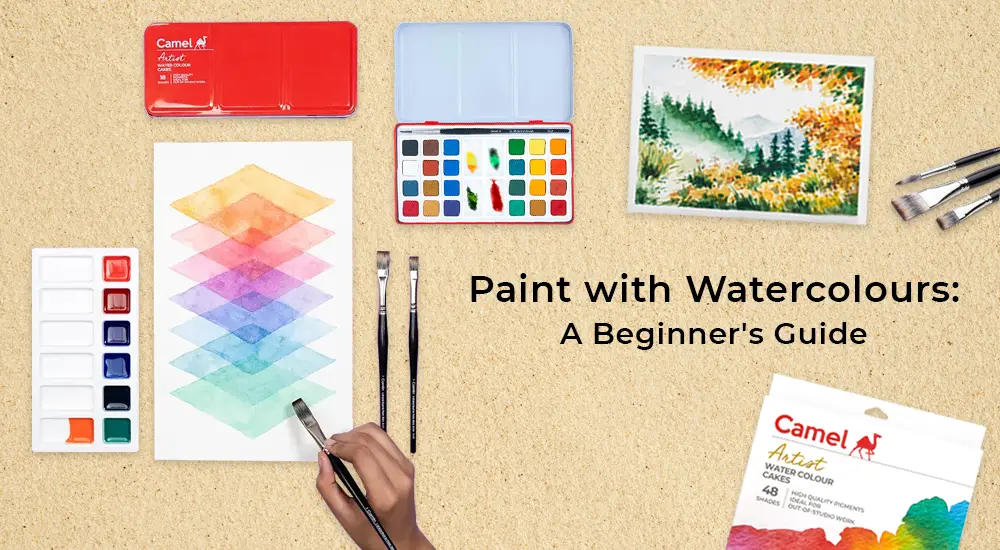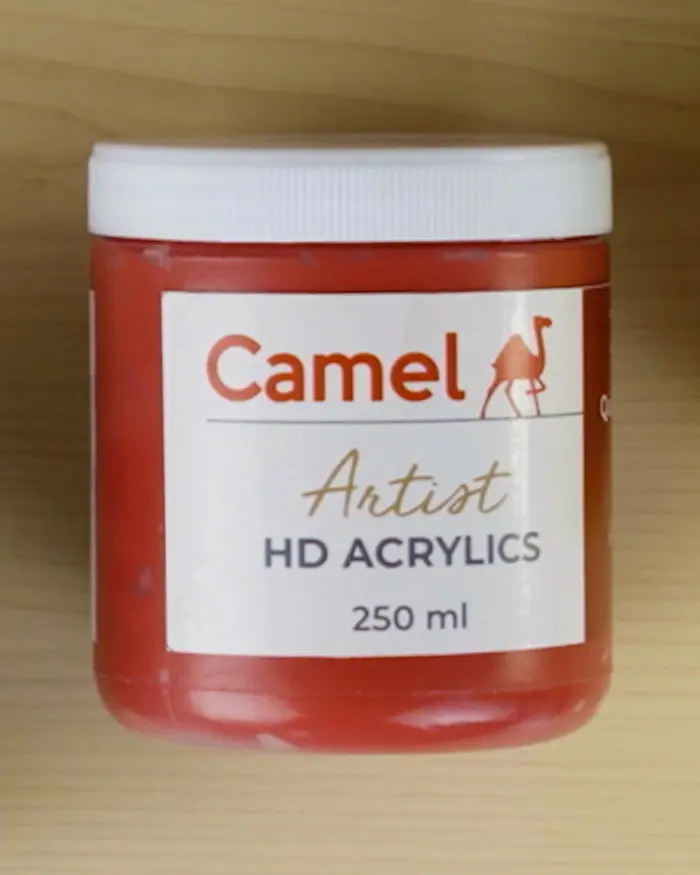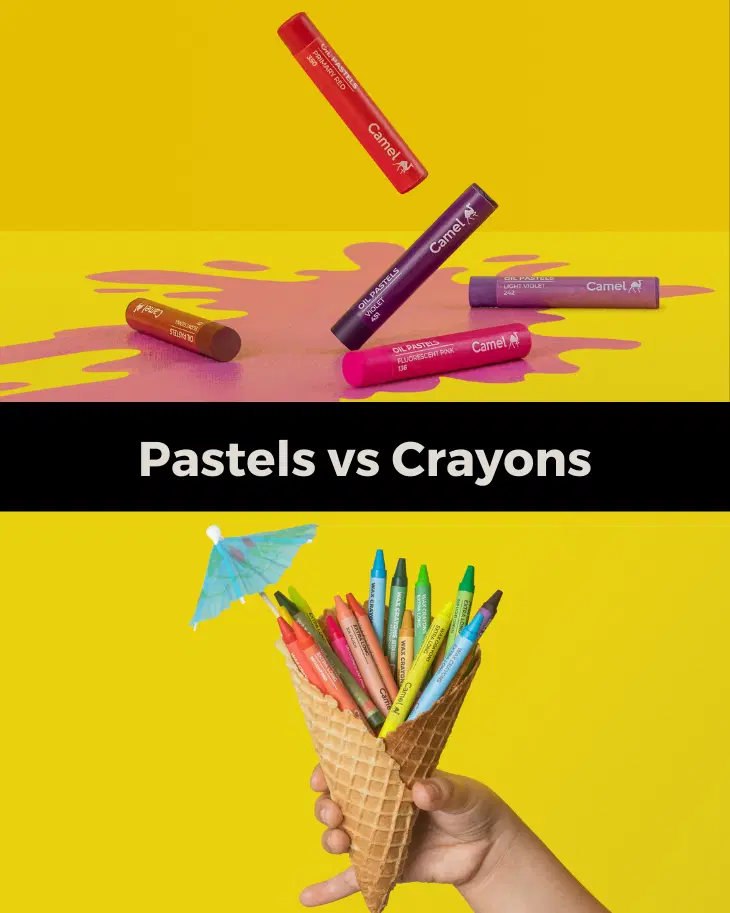Watercolour painting is one of the easiest ways to get into art. Watercolours are easy to use and blend. You only need a few basic supplies and techniques to create beautiful artwork. Here is a simple beginner’s guide on watercolours.
What Are Watercolours?
Watercolours are paints that are made of a pigment and a water-soluble binder, usually Gum Arabic. Gum Arabic is vegan and non-toxic. When you add water, the paint dissolves. This makes it easy to spread the paint with your brush. Watercolours are different from acrylic colours or oil colours. They remain water-soluble when dry, allowing artists to easily blend. Camel offers two types of watercolours:
- Camel Artist Watercolours: These are perfect for landscapes, florals, and portraits. It is great for artists and professional paintings.
- Camel Watercolours: These are student-grade colours that are comparatively transparent and free-flowing. They are smooth to use and ideal for mixing colours.
These watercolours come in two forms: cakes and tubes. Cakes are solid and have less water content, ideal for portability. Tubes, on the other hand, are soft and have more water content, making them great for mixing. For beginners, Camel watercolours are a perfect choice, offering up to 18 vibrant colours, so you won’t need to mix your shades frequently.
1. Get The Basic Supplies
- Watercolour Paints: Camel offers a great range of colours. This gives beginners lots of options for experimenting.
- Brushes: Brush preferences are subjective but as a beginner, start with a basic set of different sizes. The fine-tip brushes are good for tiny details. The larger ones are better for experimenting with colours.
- Watercolour Paper: Watercolour requires a certain paper because of its absorbency. The paper should let the paint sit on top of it till it dries rather than spreading it out. You don't need canvas or special mediums for watercolours. This makes watercolour painting simpler to set up and more beginner-friendly.
- Water: You’ll need water to clean your brushes or blend the colours.
2. Practice Basic Techniques
There are two fundamental watercolour techniques: wet-on-wet and wet-on-dry.
- Wet-on-wet: This technique involves applying wet paint to a wet surface. It’s ideal for painting soft washes, landscapes, and skies. You will get a flowing, unpredictable look that dries into unique textures.
- Wet-on-dry: This method involves painting wet pigment onto dry paper for more controlled, defined shapes. It’s perfect for creating precise details and illustration-style art.
3. Building Colour Gradients
Building up colour is a key skill when learning how to paint with watercolours. To create a colour gradient using two colours, you need the two original colours and a mix of them both. For example, to create a gradient of blue and purple, you need blue, a blue-purple shade and a pure purple shade.
Start by painting a section with one of the pure colours on one side of your paper. Then, on the opposite side, paint a section with the other pure colour. In the middle, apply the mixed shade you created. Gently blend the colours, working from the centre outwards in both directions.
4. Mixing Colours
You can easily mix and blend two watercolours. To create new shades, moisten two different and contrasting pigments and blend them on a palette. For example:
- Red + blue = Purple
- Yellow + red = Orange
- Yellow + blue = Green
5. Tips for Precision
Practice makes perfect when it comes to watercolour painting. Learning how to paint with watercolour takes time, but simple exercises can help improve your control. One such thing is painting around pre-drawn shapes on your paper. Try using different brush sizes to paint around circles, stars, or squares, leaving fine white lines between the shapes and your background. This helps develop precision while allowing you to explore watercolour textures.
Watercolours are fun and versatile. Whether you're using Camel Artist Watercolours for professional work or Camel Watercolours for casual practice, the key is to keep experimenting. Start with basic techniques, practice mixing colours, and soon you will be creating your beautiful watercolour art.
Did this article help you learn something new?
Share your thoughts with us in the comments below.
Leave a comment

Comment added
Comment updated
Comment deleted
More inspiration
“
“Art is not what you see but what you make others see.”




